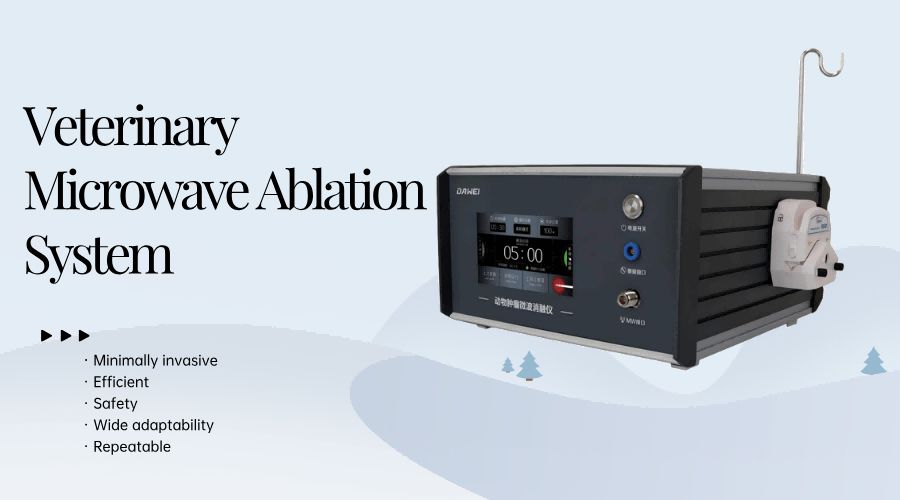As pet care evolves, so does the approach to managing serious conditions like cancer. Minimally invasive treatments, once primarily confined to human medicine, are rapidly gaining traction in veterinary oncology. Among these, microwave tumor ablation stands out as a highly effective and innovative solution for treating various animal cancers.
Microwave Ablation Market Outlook
The veterinary oncology market is experiencing rapid growth, mirroring trends in human medicine where minimally invasive tumor ablation products are increasingly being adopted. This growth is supported by the widespread availability of advanced imaging equipment in pet hospitals, such as ultrasound, CT, and MRI, which are crucial for guiding precise ablation procedures. The overall tumor ablation market, which includes microwave ablation, was valued at approximately USD 1.8 billion in 2024 and is projected to reach USD 4.4 billion by 2031, with a significant compound annual growth rate (CAGR) of 13.6% from 2025-2031. The microwave ablation segment specifically is expected to grow at a CAGR of 14.6% from 2024 to 2030, reaching an estimated USD 1,076.9 million by 2030.
A key driver for this expansion is the increasing lifespan of pets, leading to a rise in age-related diseases, particularly tumors. The incidence of tumors in pets closely parallels that in humans, influenced by shared environmental factors like diet, water quality, and even secondhand smoke or smog. In 2024, pets over seven years old accounted for 23% of the total dog population, a 5% increase year-on-year, with projections indicating over 30 million pets entering their senior years within the next three years. While middle-aged and older dogs and cats are the primary affected demographic, the number of younger pets developing tumors is also rising annually. This growing patient population underscores the urgent need for advanced and less invasive treatment options like microwave ablation.
Advantages of Microwave Ablation
Microwave ablation (MWA) offers significant advantages over traditional tumor treatment methods such as surgical resection, chemotherapy, radiation therapy, and even other thermal ablation techniques.
Compared to conventional surgery, MWA is a minimally invasive procedure that leads to improved post-operative quality of life for pets. It significantly reduces wound size and depth, decreases intraoperative blood loss, and shortens surgical time, thereby lowering the risks associated with prolonged anesthesia. Furthermore, MWA can treat tumors in locations that are challenging or impossible to address with traditional surgery, and it boasts a lower tumor recurrence rate.
When compared to other ablation techniques like radiofrequency ablation (RFA), MWA demonstrates superior performance:
Faster and More Efficient: MWA produces rapid heat, leading to quicker ablation times and larger ablation zones. Unlike RFA, which relies on electrical conduction and can be affected by charring or dry tissue, MWA uses higher frequency electromagnetic radiation (typically 915MHz or 2450MHz), making it unaffected by tissue impedance, charring, or desiccation.
Reduced Heat Sink Effect: MWA is less susceptible to the heat sink effect, which occurs when blood flow cools the ablation area, potentially limiting the effectiveness of other thermal therapies, especially near large blood vessels. This allows for more predictable and consistent ablation results.
No Skin Electrodes: MWA does not require skin electrodes, which minimizes the risk of skin burns and simplifies the procedure, especially in areas with fur or uneven surfaces where electrode pad placement can be difficult.
Effective for Larger Tumors: MWA is notably superior to RFA for treating lesions larger than 3 cm, and particularly effective for those exceeding 5 cm.
Minimal Impact on Pacemakers: Microwave ablation antennas have a smaller impact on the electrical work of cardiac pacemakers.
MWA works by using microwave electromagnetic fields to cause polar molecules within tumor tissue to vibrate at high speeds, rapidly generating temperatures of 60-150°C, which leads to coagulative necrosis of cells. This “in situ inactivation” technique means the ablated tumor tissue is absorbed by the body, eliminating the need for removal and resulting in minimal trauma.
Introducing Dawei Veterinary Microwave Ablation Machine (AMA-100)
Dawei Veterinary Medical (Jiangsu) Co., Ltd. presents the AMA-100, an advanced animal tumor microwave ablation instrument designed to provide a highly efficient, minimally invasive interventional surgical solution for pet tumor treatment.
The AMA-100 system consists of a main unit and disposable microwave ablation needles as primary consumables. This device offers a precise, safe, and repeatable surgical option with a short operation time, simple procedure, and minimal side effects. Its strong targeting capability, small incision, reduced bleeding, and low post-operative recurrence rate make it an ideal choice for veterinary oncologists. Furthermore, it does not require negative electrode pads, simplifying the operation.
The AMA-100 is broadly applicable for treating various types of tumors, including:
Mammary tumors
Genital tumors
Visceral tumors
Osteosarcoma
Oral tumors
And other types of tumors
Dawei’s AMA-100 represents a significant step forward in animal cancer care, offering a sophisticated yet user-friendly solution that prioritizes the well-being and recovery of animal companions.
Post time: Jul-15-2025



